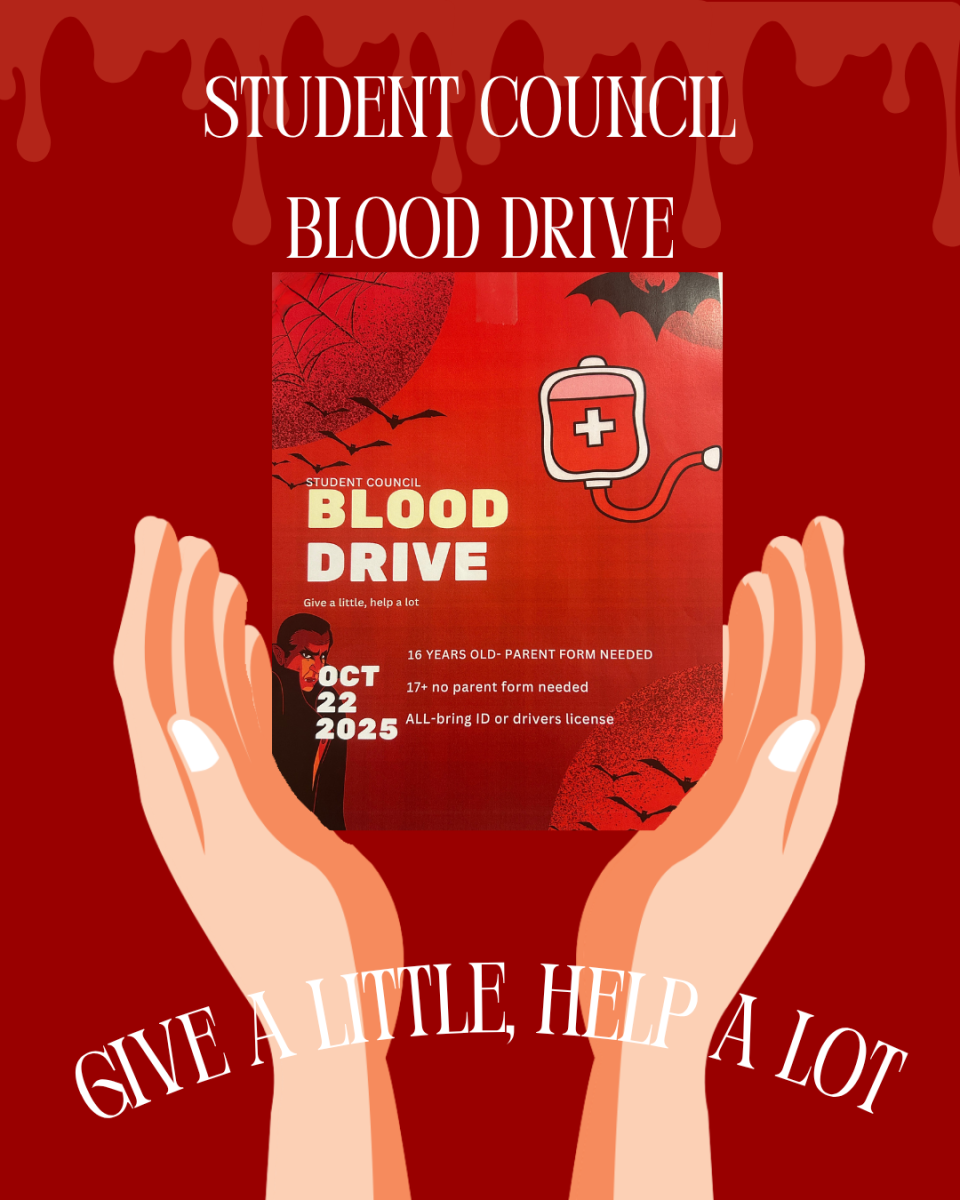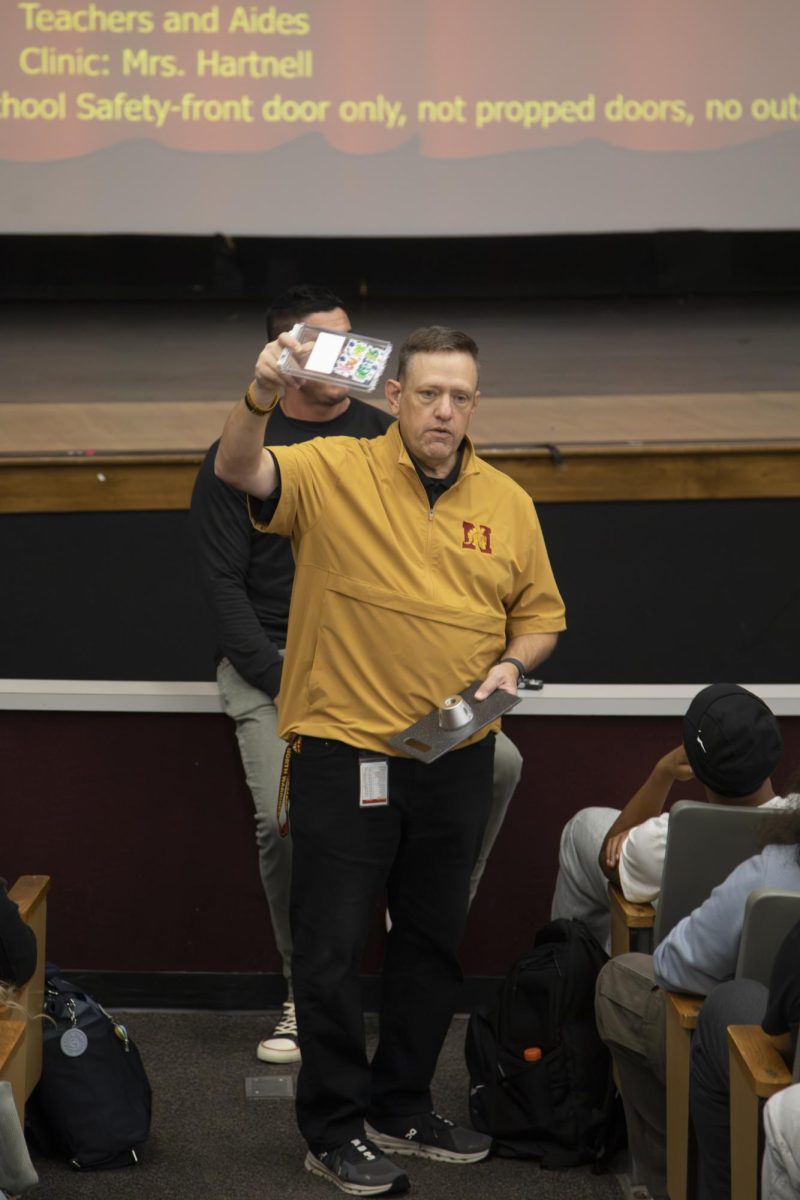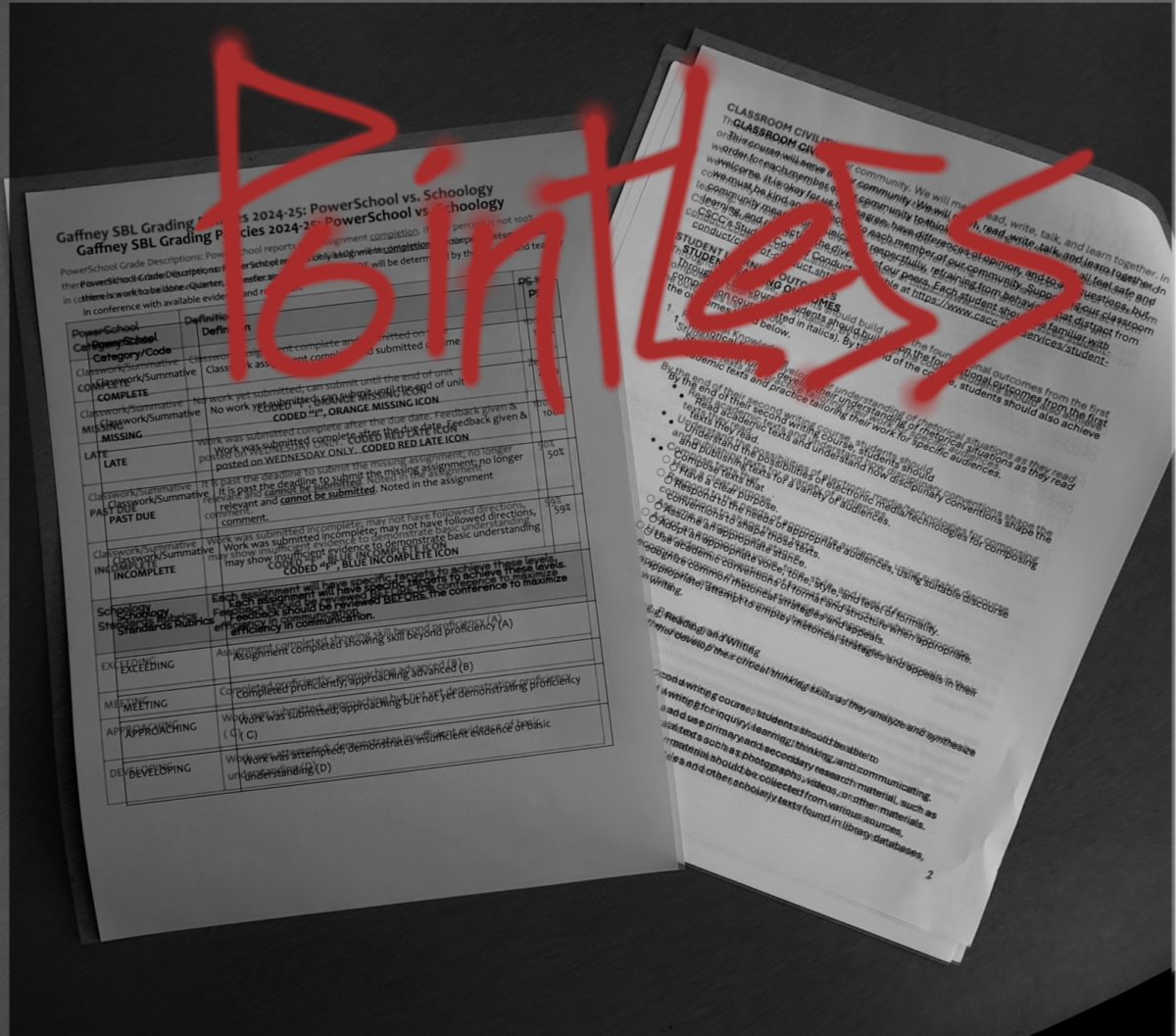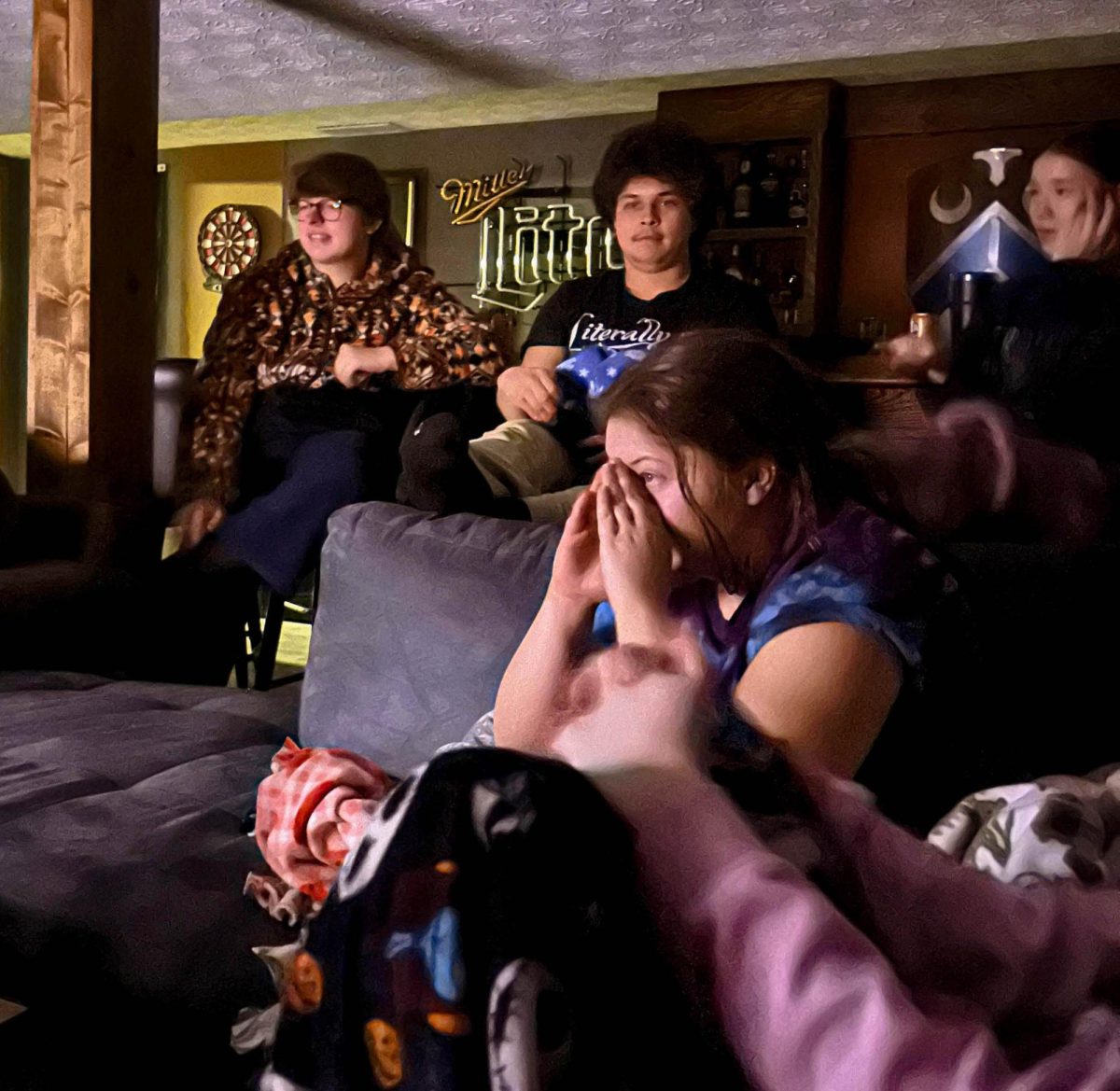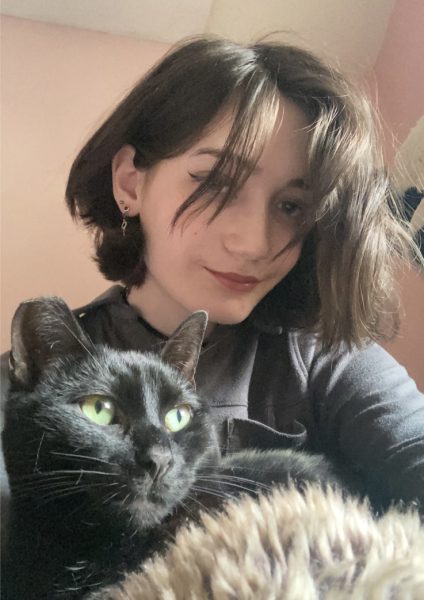The mystery thriller novel “Gone Girl” by Gillian Flynn details the lives of Amy and Nick Dunne, two characters in a struggling marriage who are abruptly separated on their 5th anniversary when Amy Dunne goes missing without explanation, no body to be found and the only evidence of a struggle being the ruined living room. The story follows Nick through his day-to-day experiences doing his best to maintain public support even as more and more evidence stacks against him. He does what he can to support the case. “Gone Girl” also follows Amy through her diary entries every other chapter, describing the couple’s married life and experiences to slowly reveal more about Nick and Amy from her perspective.
The book begins slowly but picks up speed as more details come to light regarding Amy’s disappearance until the major twist in part two at page 219.
It’s suspenseful throughout, maintaining tension and constantly revealing new surprises. The content is suitable for a wide range of ages, loved by adults, elders and teens. It’s the perfect book to pass the time, hardly having a boring moment especially towards the end of part one and onwards. It is 415 pages, making it a decent read for the week of spring break.
I have been reading “Gone Girl” over the course of roughly two weeks during breaks at school because of the extremely addicting story which contains plenty of cliffhangers to keep readers engaged. The book has the sort of descriptions that can bring back memories from your own experiences and make you feel as though you’re living through it.
Nick and Amy’s less than ideal marriage is apparent quite immediately, though not to a severe extent to allow for plenty of buildup. I honestly felt a bit of dread when Amy Dunne went missing, not because I felt it to be a particularly emotional part of the book, but because I can hardly stand a mystery novel and I thought I knew the direction in which it was going. 
As an avid watcher of films and reader of many books, particularly of the horror genre, I thought I could trace the plotline in my head from that moment alone. I believed each new moment in the storyline would be expected, already a vague plot on my mental map now solidified. I was tempted to put the book down, but despite my genuine disdain for mystery, I continued reading for the author’s distinct writing style.
I was surprised, actually. Every new detail revealed became progressively more pivotal until I had only an endpoint in mind for my metaphorical mental map.
I found myself losing track of time as I read, picking up “Gone Girl” even over my phone at times until after certain days, I read over 40 pages at a time in spite of other homework assignments or daily tasks that needed to be done.
It had been so long since I’d found something I’d choose to consistently read in my free time for fun. By the time I reached part two, I had traded my mental map for theories and speculations, none of which I was ever fully certain of enough to settle on. I ended up being surprised despite all the theories I’d come up with.
There’s hardly a boring moment in the book since it constantly has new surprises in store, and I still read it all eagerly. It’s the sort of book one would read hopeful of it being decent and instead it would become a new cherished favorite.
If you’re interested in reading a copy of your own over spring break, speak to Leslie Baumann in room 217 to ask about Westerville North High School’s book club. The next Book Club meeting is April 4 in the same room. All are welcome to join.


